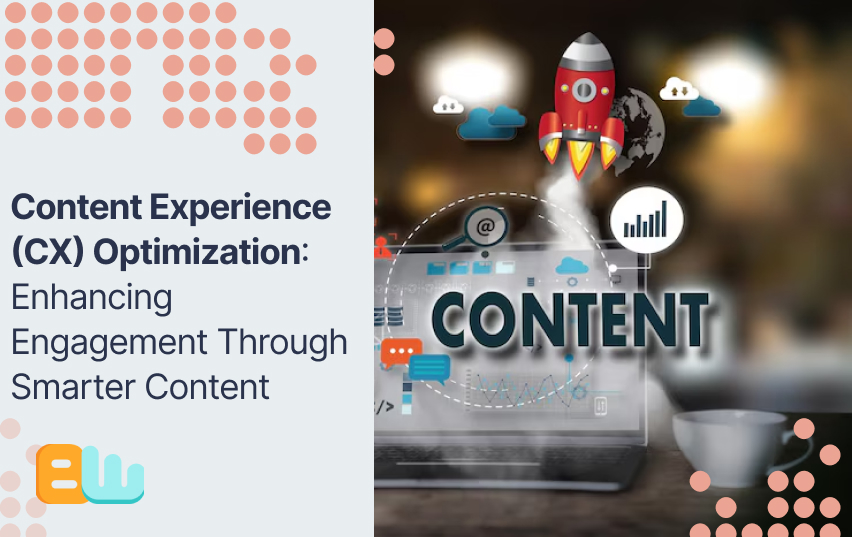
Do you find it difficult to maintain audience interest in your content? You’re not alone
Just creating high-quality content is not enough in the current digital world. Just as important as the material is how your audience interacts with it, from discovery to consumption.
91% of B2B buyers like interactive and visual content over static, conventional formats, according to recent Demand Metric data. According to Aberdeen Group, businesses with effective content experience strategies keep 89% of their clients on average, while businesses with poor content experiences only keep 33%.
Let’s explore how you can change your content strategy to create engaging, captivating, and conversion-oriented experiences for your audience.
Introduction to Content Experience Optimization
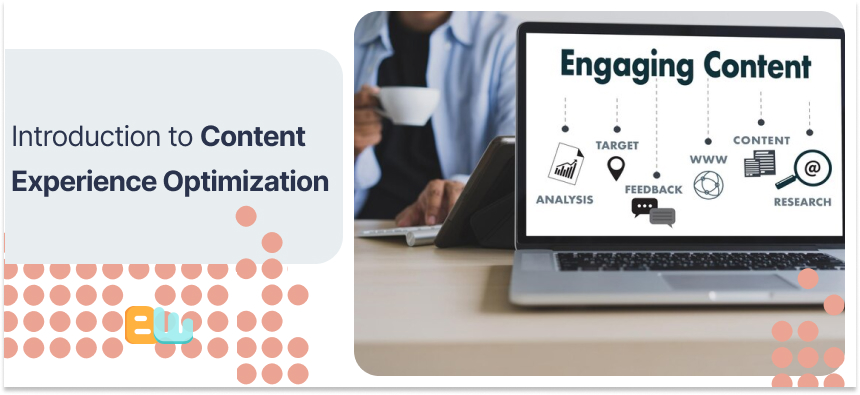
The impression that your audience gets from interacting with your content is known as the content experience. It includes everything from the design and speed of your website to the information’s flow and exciting suggestions.
Content experience optimization focuses on how people engage with your content ecosystem overall, as opposed to traditional content marketing, which is mostly focused on generation and delivery.
Why is this important? Because if the experience around it is bad, even the most useful information may not succeed. Consider this: Have you ever abandoned a website because it was hard to use or loaded too slowly? That’s a content experience failure.
The statistics speak volumes. Businesses that excel in customer experience beat those that fall behind by over 80%, claims Forrester. 47% of users anticipate websites to load in two seconds or less, according to Contentsquare study, and the abandonment rate rises with every extra second of loading time. By emphasizing on content experience, you’re optimizing your marketing strategy rather than simply a specific content.
Understanding the Content Experience Framework
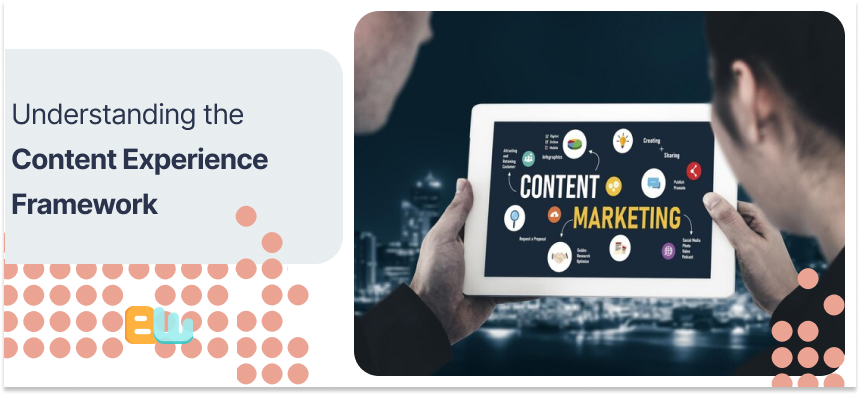
The Five Pillars of Effective Content Experience
A strong content experience framework rests on five core pillars:
1. Accessibility: Can users easily find and consume your content regardless of device or ability?
2. Organization: Is your content logically structured and intuitively navigable?
3. Personalization: Does your content adapt to individual user needs and behaviors?
4. Consistency: Do you maintain a coherent experience across all channels and touchpoints?
5. Engagement: Does your content invite interaction and spark meaningful connections?
Each pillar supports the others, creating a sturdy foundation for your content strategy. When one pillar weakens, the entire structure becomes vulnerable.
How User Journey Maps Influence Content Strategy
User journey maps show how users engage with your content at different points of contact. You can find crucial points where optimization can have a big influence on engagement by charting these journeys.
A B2B software company, for instance, may find that before requesting a demo, prospects usually study five pieces of content. You can strategically position the appropriate content at every stage of that journey thanks to this insight.
To create effective journey maps:
1. Identify your key audience segments
2. Document all potential touchpoints
3. Map content needs to each stage
4. Note emotional states and potential pain points
5. Identify opportunities for experience enhancement
This process reveals gaps in your content experience that might otherwise go unnoticed.
Measuring Content Experience: Key Metrics and KPIs
Without measurement, optimization is just guesswork. Here are the metrics that matter most for content experience:
– Engagement metrics: Time on page, scroll depth, and interaction rate
– Navigation metrics: Click-through rate, page views per session, and bounce rate
– Conversion metrics: Form completions, downloads, and direct response actions
– Retention metrics: Return visitor rate and subscription/follow metrics
– Satisfaction metrics: NPS scores, surveys, and direct feedback
7 Powerful Strategies for CX Optimization
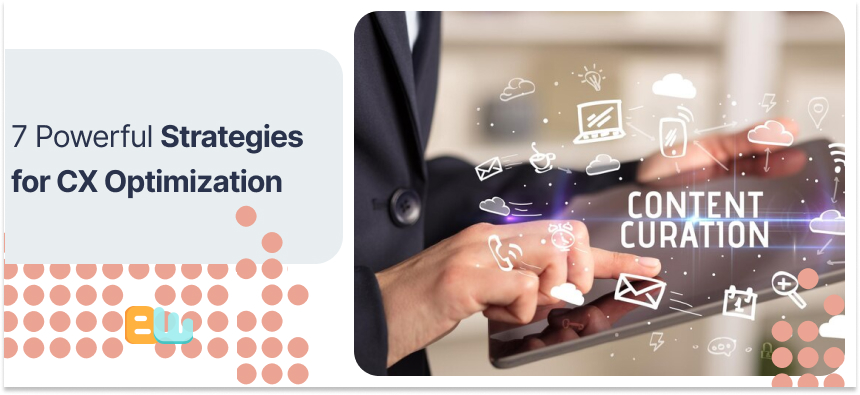
1. Personalizing Content Based on User Behavior
Today’s audiences expect content that speaks directly to their needs. Research from Epsilon shows personalized experiences drive 80% higher conversion rates.
Implement these personalization tactics:
– Use behavioral data to recommend relevant content
– Segment your audience based on engagement patterns
– Customize CTAs based on previous interactions
– Adjust content depth based on visitor knowledge level
– Personalize email content based on website behavior
2. Creating Seamless Multi-Channel Content Experiences
Your audience interacts with your brand across different website, social media platforms, email, mobile app and expects consistency along the way.
Here’s how to create seamless experiences:
– Maintain consistent messaging and design across all platforms
– Enable content resumption across devices
– Create channel-appropriate versions of core content
– Use cohesive storytelling that builds across channels
– Implement unified analytics to track cross-channel journeys
3. Implementing Strategic Content Architecture for Navigation
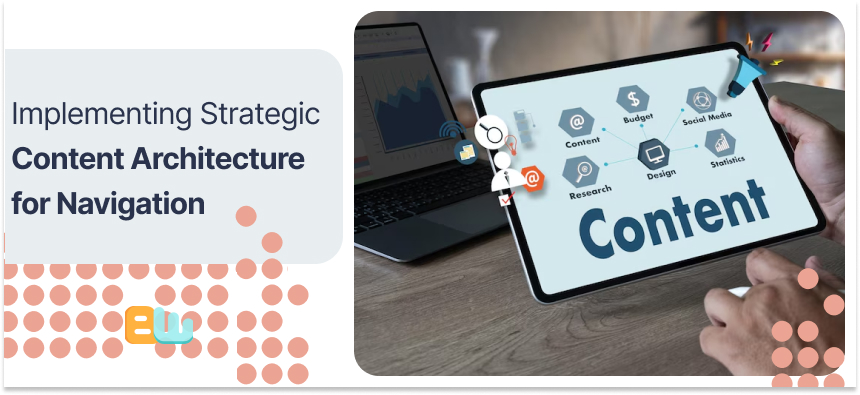
How you organize and connect your content, directly impacts user experience. Poor architecture make users frustrated because they have to work harder to find what they need.
Improve your content architecture by:
– Creating clear, logical category structures
– Implementing intuitive internal linking strategies
– Using breadcrumbs for orientation
– Providing multiple navigation paths for different user preferences
– Creating content hubs around core topics
4. Optimizing Content Loading Speed and Performance
Speed is a critical yet often overlooked aspect of content experience. Google research confirms that 53% of mobile visitors leave sites that take longer than three seconds to load.
Speed up your content delivery by:
– Optimizing image sizes and formats
– Implementing lazy loading for media elements
– Minifying CSS and JavaScript
– Utilizing content delivery networks (CDNs)
– Prioritizing above-the-fold content loading
5. Enhancing Visual Elements for Better Engagement
Visual content drives engagement. Studies show content with relevant images gets 94% more views than content without any images.
Enhance your visual strategy by:
– Using high-quality, relevant imagery
– Creating custom graphics that reinforce key points
– Incorporating data visualizations for complex information
– Ensuring visual consistency across your content
– Optimizing images for both performance and accessibility
6. Crafting Interactive Content That Converts Readers

Interactive content changes passive consumers into active participants. Research by Demand Metric found that interactive content leads to twice as many conversions as static content.
Try these interactive formats:
– Assessments and quizzes
– Calculators and tools
– Interactive infographics
– Polls and surveys
– Configurable product demos
7. Structuring Content for Maximum Readability
Even the most valuable information will go unnoticed if it’s presented as a wall of text. Proper structure makes content more inviting and appealing.
Improve readability by:
– Using descriptive headings and subheadings
– Breaking content into scannable chunks
– Incorporating bulleted and numbered lists
– Varying paragraph length, with a focus on brevity
– Using white space strategically
How AI Is Transforming Content Experience
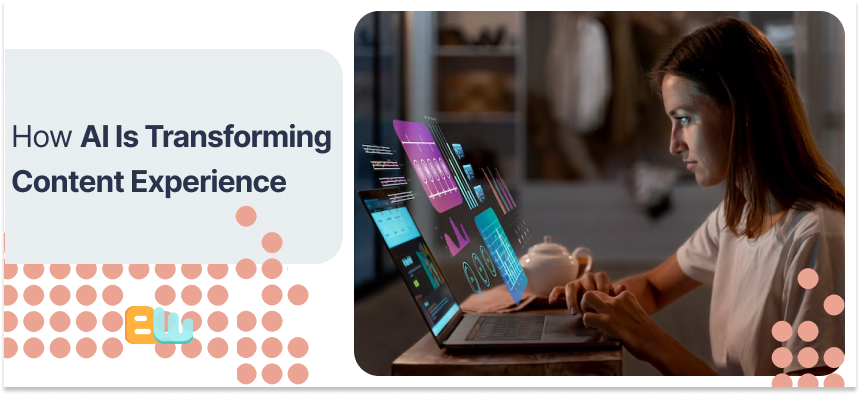
Smart Content Recommendations That Drive Engagement
AI-powered recommendation engines analyze user behavior to suggest relevant content, much like Netflix recommends shows based on viewing history.
These systems can:
– Identify content consumption patterns
– Predict what content will be most relevant to each user
– Continuously learn from user interactions
– Surface underperforming but valuable content
– Guide users through optimal content journeys
Implementations like this have helped companies like Spotify achieve 40% higher listener engagement through personalized playlists.
Predictive Analytics for Content Strategy Decisions
AI now enables content teams to move from reactive to proactive strategies by predicting:
– Which topics will gain traction
– What content formats will perform best for specific segments
– When to publish for maximum impact
– Which distribution channels will drive the most engagement
– What content might need refreshing or updating
Automated Personalization: The Future of CX
Modern systems can automatically:
– Adjust headline language to match user preferences
– Personalize example scenarios to match industry or role
– Modify content depth based on technical sophistication
– Customize calls-to-action based on funnel position
– Reorder content sections based on demonstrated interests
Early adopters of automated personalization report conversion improvements of 20-30% compared to static content approaches.
Content Experience Audit: Evaluating Your Current Strategy
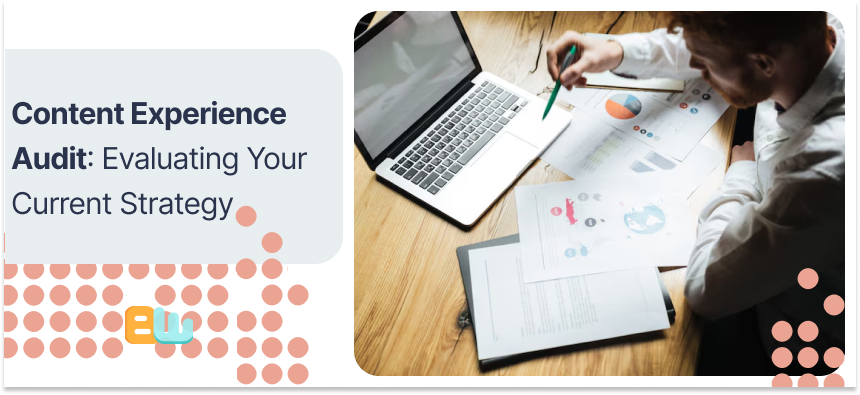
Step-by-Step Guide to Conducting a CX Audit
Before you can improve your content experience, you need a clear picture of your current state. Follow these steps:
1. Map your content inventory: Document all content assets across channels
2. Analyze performance data: Identify top and underperforming content
3. Evaluate the user journey: Track typical paths through your content
4. Assess technical performance: Measure loading speeds and technical issues
5. Gather user feedback: Collect qualitative insights from actual users
6. Compare against competitors: Benchmark your experience against industry leaders
7. Identify gaps and opportunities: Document where improvements will have the greatest impact
Identifying Content Experience Gaps and Opportunities
Common content experience gaps include:
– Disconnected content journeys with dead ends
– Inconsistent messaging across channels
– Missing content for specific buyer stages
– Poor mobile experiences
– Slow-loading pages and media
– Lack of personalization
– Weak calls-to-action
Each gap represents an opportunity for significant improvement. Prioritize fixes based on potential impact and implementation difficulty.
Tools That Streamline Your Content Experience Analysis
Several tools can help you analyze and optimize your content experience:
– Content audit tools: Screaming Frog, Semrush Content Audit
– User behavior analytics: Hotjar, Crazy Egg, FullStory
– Performance monitoring: Google PageSpeed Insights, GTmetrix
– SEO platforms: Ahrefs, Moz, SEMrush
– Content experience platforms: Uberflip, PathFactory, Showpad
Optimizing Content for Different Stages of the Funnel
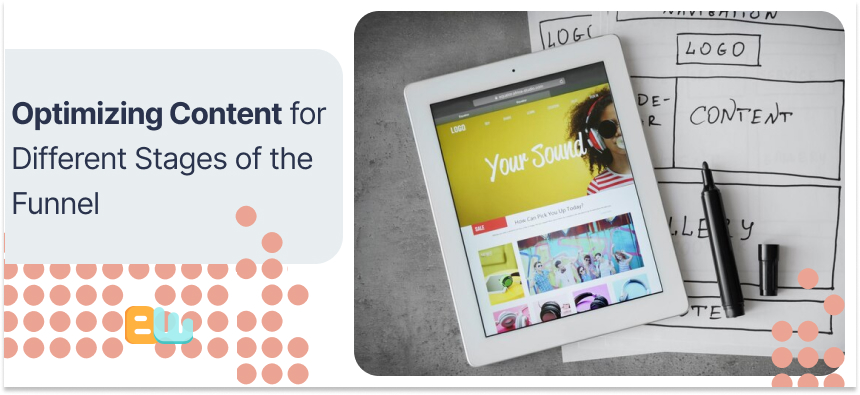
Awareness Stage: Crafting Discoverable Content Experiences
At the awareness stage, potential customers are just discovering they have a problem. Your content should be:
– Highly discoverable through SEO and social sharing
– Educational rather than promotional
– Broadly appealing to your target audience
– Quick to consume with clear value propositions
– Designed to encourage further exploration
Consideration Stage: Building Trust Through Content
During consideration, prospects are evaluating potential solutions. Your content should:
– Provide in-depth information about approaches to solving their problem
– Offer comparative insights without being overly promotional
– Establish your expertise and thought leadership
– Answer specific questions prospects have during evaluation
– Guide users toward decision-stage content
Effective consideration-stage formats include case studies, webinars, detailed guides, and comparison content.
Decision Stage: Creating Conversion-Focused Content Experiences
At the decision stage, prospects are ready to select a solution. Your content should:
– Address specific objections and concerns
– Provide clear next steps for implementation
– Showcase specific results and outcomes
– Offer direct comparison with alternatives
– Make the conversion process frictionless
Focus on demos, free trials, consultation offers, detailed pricing information, and customer testimonials that provide the final push toward conversion.
Breaking Down Successful Content Experience Case Studies

How Brand X Increased Engagement by 250%
Financial software company Intuit transformed their content experience by implementing a personalized resource center that adapts based on user behavior.
Key elements of their approach included:
– Dynamic content recommendations based on previous interactions
– Progressive profiling to improve personalization over time
– Micro-conversion opportunities throughout the journey
– Mobile-optimized experience with seamless transitions
– Consistent experience across web, email, and in-product content
Lessons from Top-Performing Content Experience Platforms
Content experience leaders share several common practices:
1. They prioritize discoverability: Content is organized around user problems, not internal structures
2. They focus on context: Content is presented with clear relevance to the user’s situation
3. They enable self-guidance: Users can easily navigate between related content pieces
4. They integrate conversion paths: Every content piece has appropriate next steps
5. They continuously optimize: Experience improvements are made based on performance data
These practices create seamless experiences that naturally guide users toward conversion.
Small Business Success: Affordable CX Optimization Tactics
Not every business has enterprise-level resources, but small businesses can achieve significant results with targeted optimizations.
Marketing agency Kuno Creative implemented several low-cost improvements:
– Created topic clusters connecting related content
– Improved internal linking between complementary content
– Implemented basic personalization based on referral source
– Optimized page load performance through image compression
– Added progressive CTAs based on content consumption
Future Trends in Content Experience Optimization
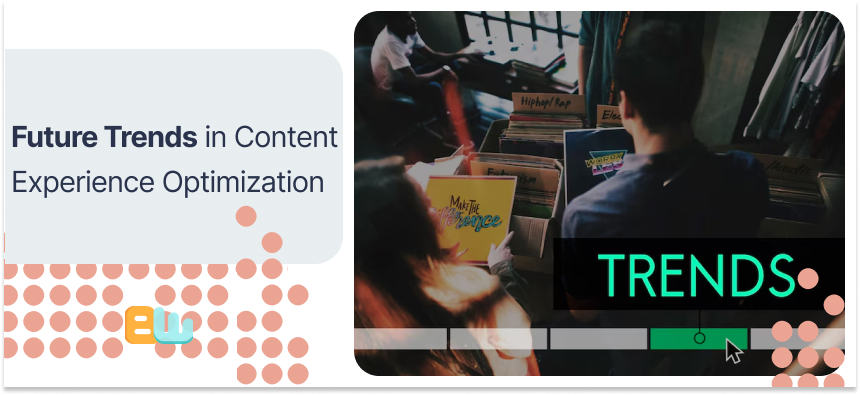
Voice Search and Conversational Content Experiences
As voice assistants become ubiquitous, content must adapt to conversational search patterns:
– Questions and answers need to be more conversational and direct
– Content should address specific queries rather than broad topics
– Featured snippet optimization becomes critical
– Audio versions of content gain importance
– FAQ sections take on renewed significance
Organizations optimizing for voice now will gain significant advantages as this mode of content consumption continues to grow.
The Rise of Immersive Content Technologies
Immersive technologies like AR and VR are transforming content from something we read to something we experience:
– Virtual product demonstrations
– Interactive 3D visualizations
– Augmented reality tutorials
– Virtual spaces for content exploration
– Immersive storytelling experiences
While full implementation may require specialized skills, even small experiments with immersive content can differentiate your brand.
How Web 3.0 Will Transform Content Experience
Web 3.0 technologies promise to change how content is created, distributed, and monetized:
– Blockchain verification of content authenticity
– Decentralized content platforms reducing platform dependency
– Token-gated premium content experiences
– Community-driven content creation and curation
– Direct creator-to-consumer relationships without intermediaries
Conclusion: Building Your Content Experience Strategy
Developing outstanding content experiences requires constant dedication to better understanding and meeting the needs of your audience.
Start by asking your users to rate their current experience with your material. Where do they encounter friction? Where do they disengage? These pain points represent your biggest opportunities.
Next, analyze the improvements according to their influence. Usually, minor adjustments like speeding up page loads or adding some basic customisation leads to significant success.
Keep in mind that the main goal of content experience optimization is empathy, or knowing what your audience needs and creating experiences that meet those goals.
By using the strategies we’ve covered in this blog, you’ll not only increase engagement metrics but also foster closer bonds with your audience that will benefit your business.
What content experience improvements will you implement first? The answer may be your first step toward transforming your content from something people consume to something people experience.
